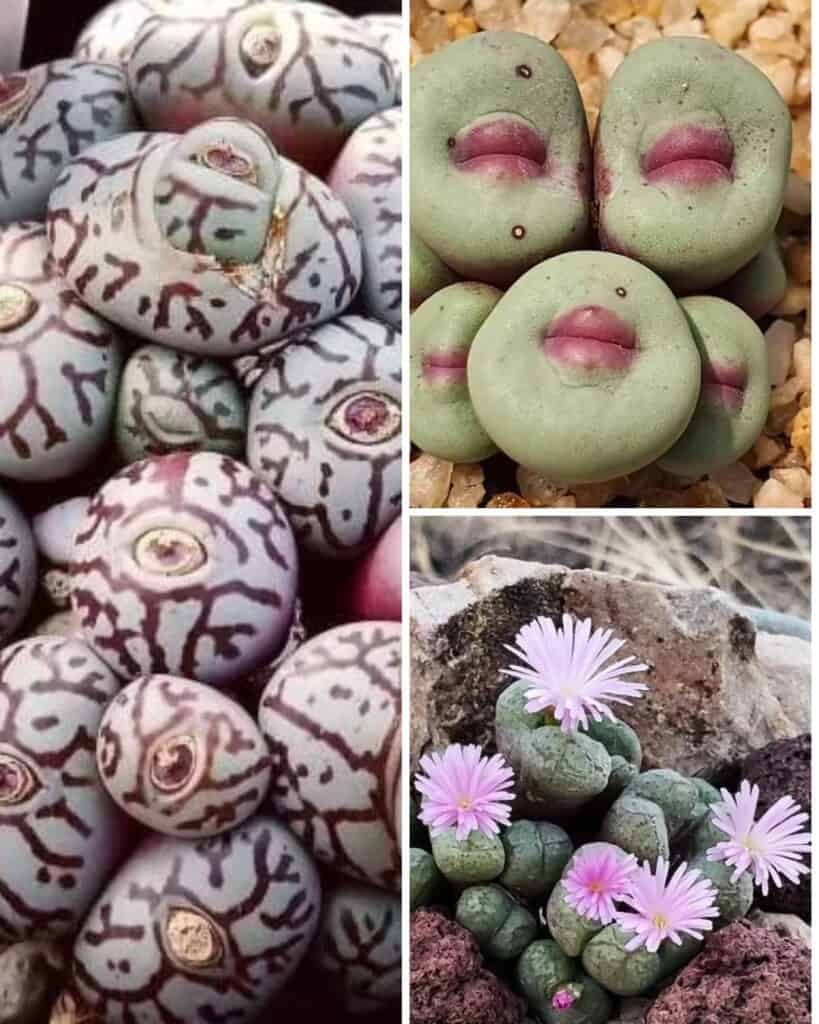‘Music’ hardneck garlic has an exceptional flavor, making it a culinary favorite. When raw, it’s hot and spicy, but when cooked, it has an aromatic, authentic garlic flavor with light peppery and sweet notes.
‘Music’ packs its flavor into bulbs with four to six huge cloves instead of a dozen smaller ones. Cloves are easy to peel, making them a chef’s pick for taste, versatility, and ease. The robust bulbs, carefree, easy to grow, adaptable, and cold-hardy.
Music Hardneck Garlic
‘Music’ Hardneck Garlic Overview
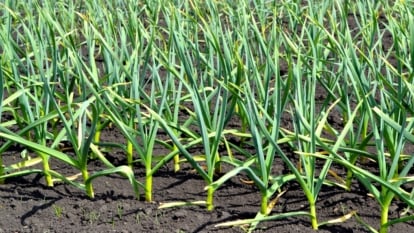
|
|
|
What is ‘Music’ Hardneck Garlic?
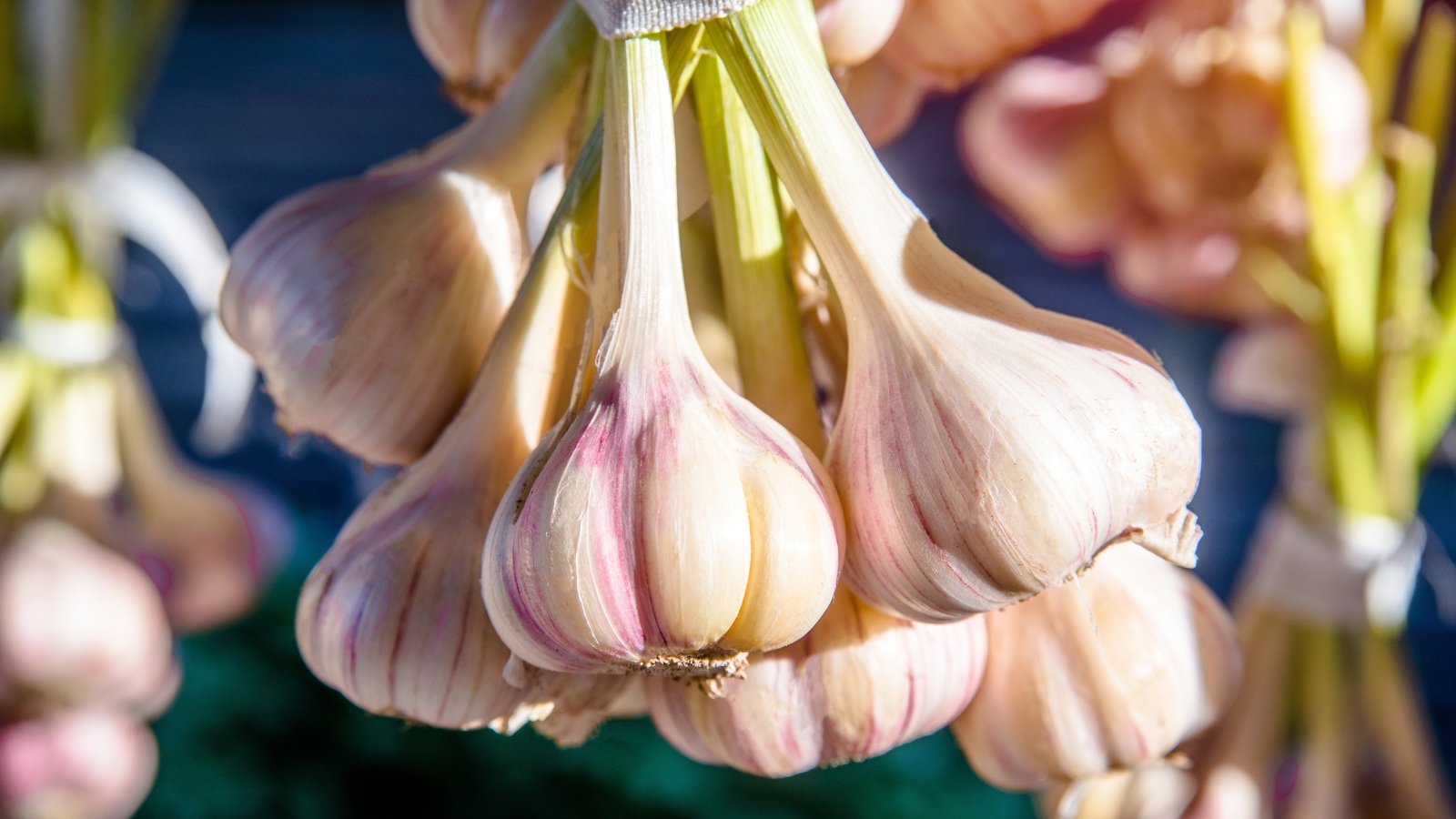
A “porcelain” garlic type, ‘Music’ brings a complexity of flavor to large bulbs wrapped with crisp white papers. The pretty shell has a hint of blush, and each clove has sheaths in bronzey-rose and white.
Hardneck garlic, as opposed to softneck varieties, boasts superior cold hardiness, classic flavor, and easy-peeling cloves. In spring and summer, it produces long, curly scapes. The scapes are a delicious benefit of the crop—clip them fresh to use in stir fries and other dishes just like scallions and leeks.
‘Music’ bulbs are the perfect pairing of high-yield and low-maintenance. The easy-care garlic has few landscape problems. Start with high-quality organic, disease-free “seed” garlic in the fall and enjoy a multitude of fresh bulbs come summer.
Characteristics
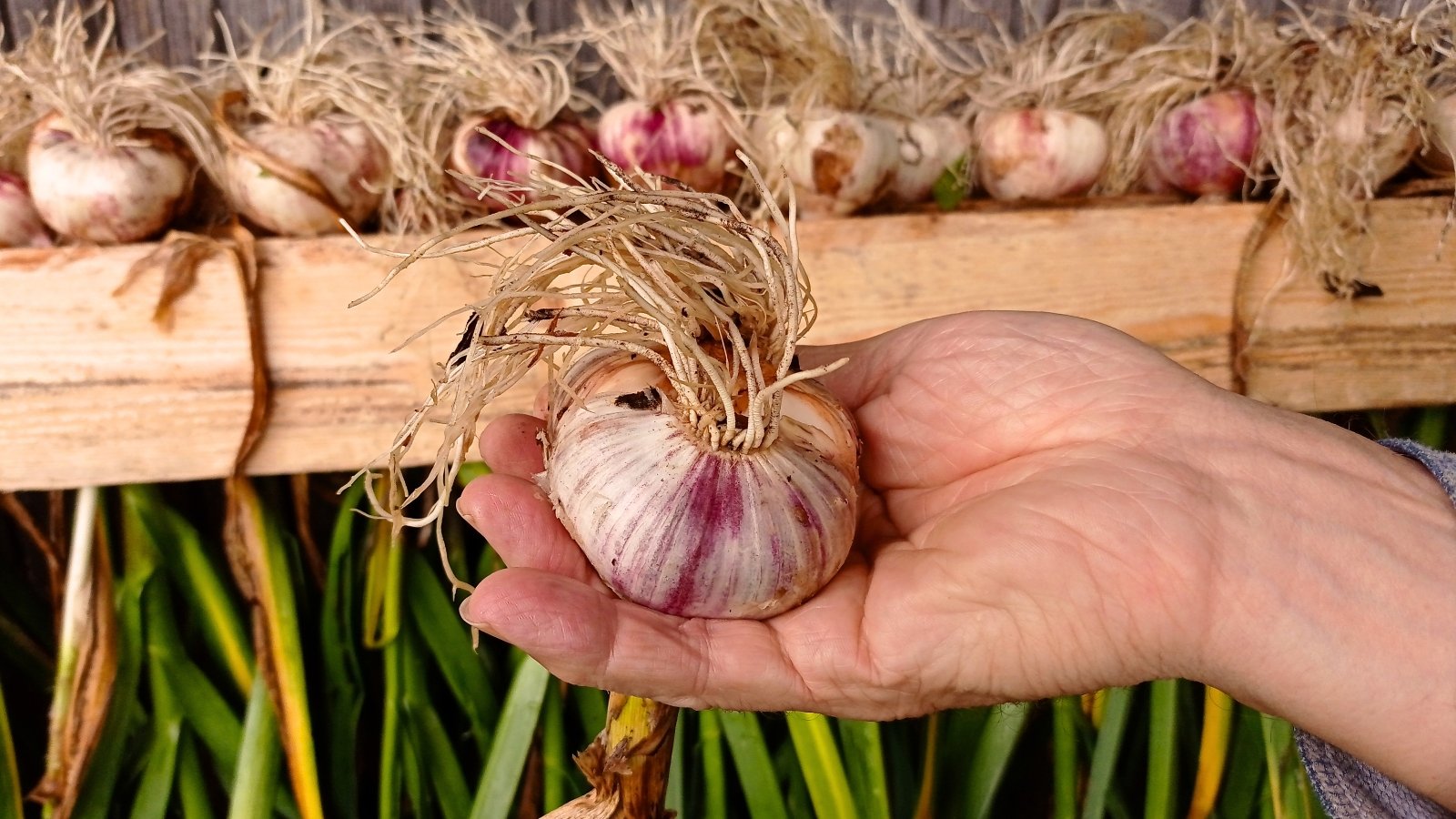
The distinguishing characteristic of ‘Music’ is its rich flavor in oversized, easy-to-use cloves. Picture-perfect bulbs have thick paper wrappers to protect individual cloves and the entire bulb.
Delicious, butter-flavored scapes are unique to hardnecks. They emerge in spring and, left on the plant, develop bulbils. These small capsules form small cloves and are another way to propagate the crop in addition to segmented cloves.
‘Music’ has a long shelf life among hardnecks. It stores for up to nine months after harvesting and curing.
Native Area
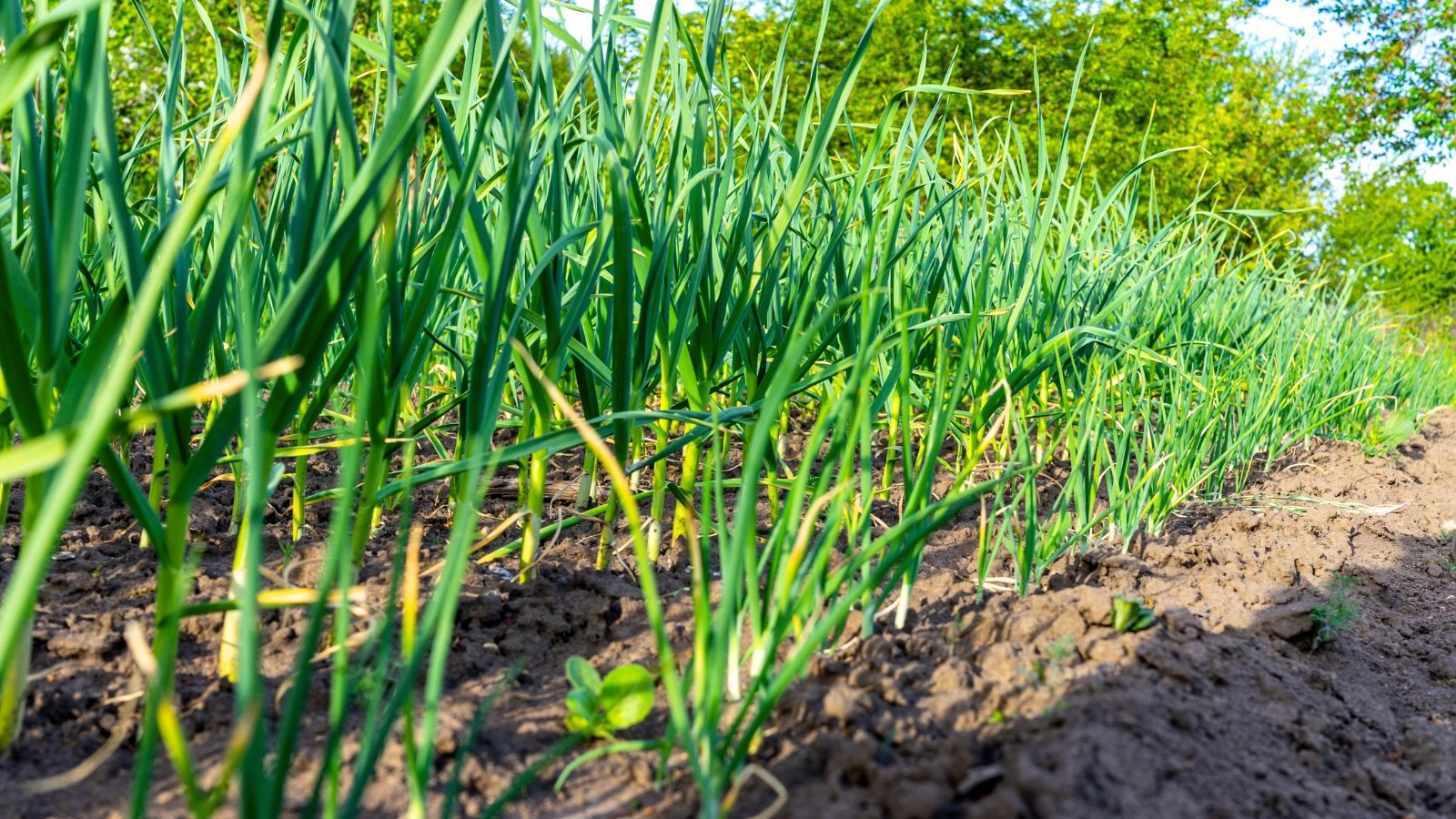
The bulbous plants likely originated in Central Asia from wild species. However, with extensive trading and travel throughout southern Europe, tracing the routes of cultivated garlic from its wild ancestors is elusive.
‘Music’ is the namesake of garlic grower Al Music, who brought it to Canada from Italy in the 1980s. The cultivar is a continual best seller for its robust flavor.
Hardneck garlic thrives in areas with long, cold winters. It flourishes after a chill period and under snowpack. The family Amaryllidaceae includes agapanthus, amaryllis, daffodils, onions, shallots, leeks, and many others.
Planting
Fall is the best time to plant garlic. It allows roots to develop before heavy frost. Aim for six to eight weeks before your anticipated first frost date to get cloves in the ground. In many climates, this is usually September and October. This hardy variety is ideal for very cold northern zones.
In warm regions, wait until the coolest months to plant, generally December and January. Hardnecks require vernalization for one to two months at temperatures below 40°F (4°C) to fully develop.
‘Music’ matures about 250 days from planting. Planted in the fall, they’re ready to harvest in the summer. You can also plant in spring and harvest about 90 days later, though bulbs will be smaller. They’ll need the vernalization period from refrigeration for about two months before planting.
There are two ways to plant hardnecks: through cloves and through bulbils produced on the scape. Cloves are the easiest and fastest way to get whole bulbs in a single growing season.
Cloves
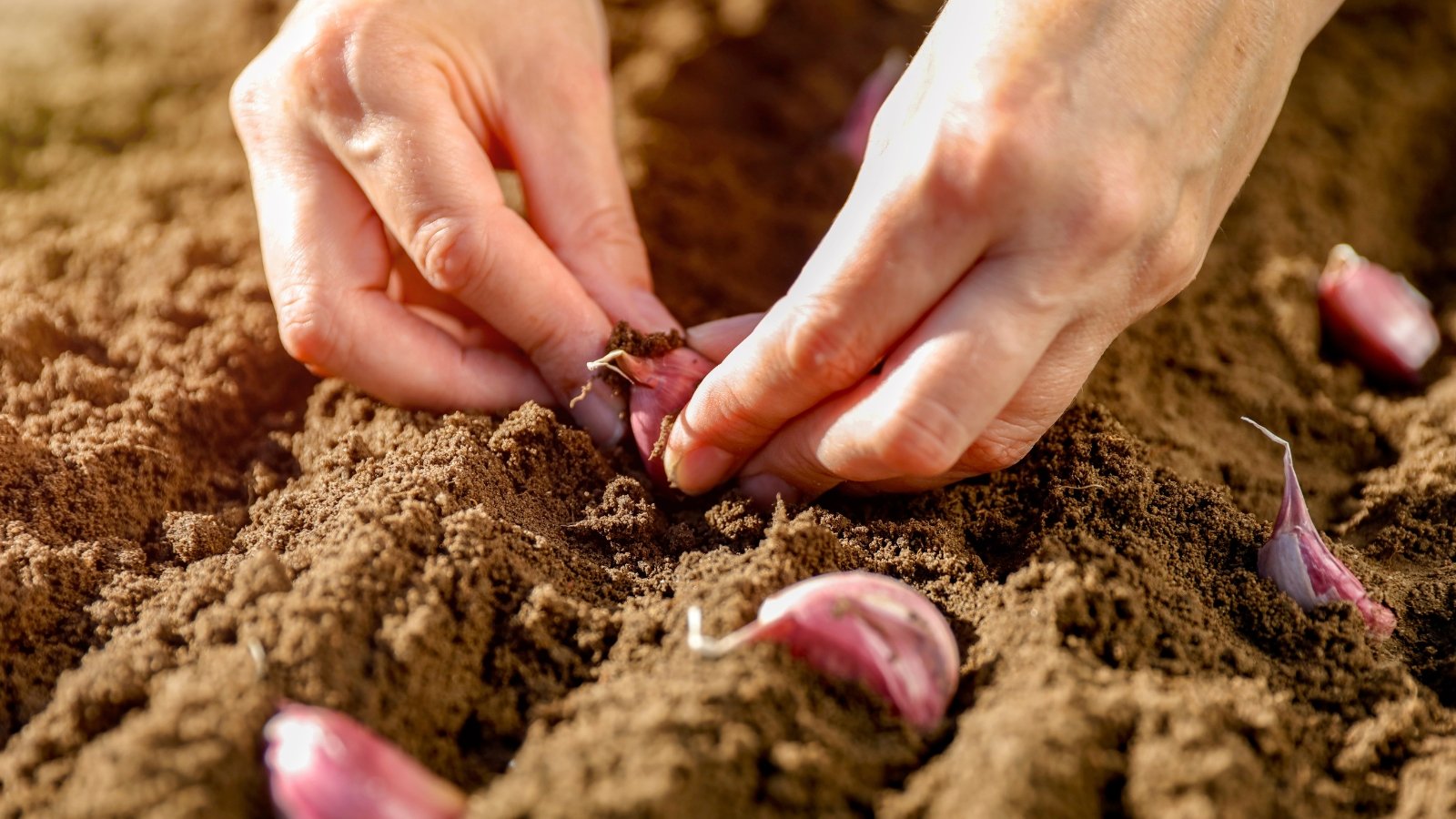
Planting cloves is easy, and the payoff is great for such little effort. Separate individual cloves from the whole. Leave the papers around each clove intact—they offer a layer of protection from pests and diseases. Plant the largest segments, leaving the little central cloves for eating. Or, plant them in a cluster for little garlic sprigs.
Tuck the cloves into the soil two inches deep, with the pointy stem end upright and the flat bottom (basal plate) downward. Planting in other directions leads to malformed bulbs.
Space the cloves four to six inches apart. Cover with soil and water thoroughly. Wait until summer to enjoy the bounty.
Bulbils
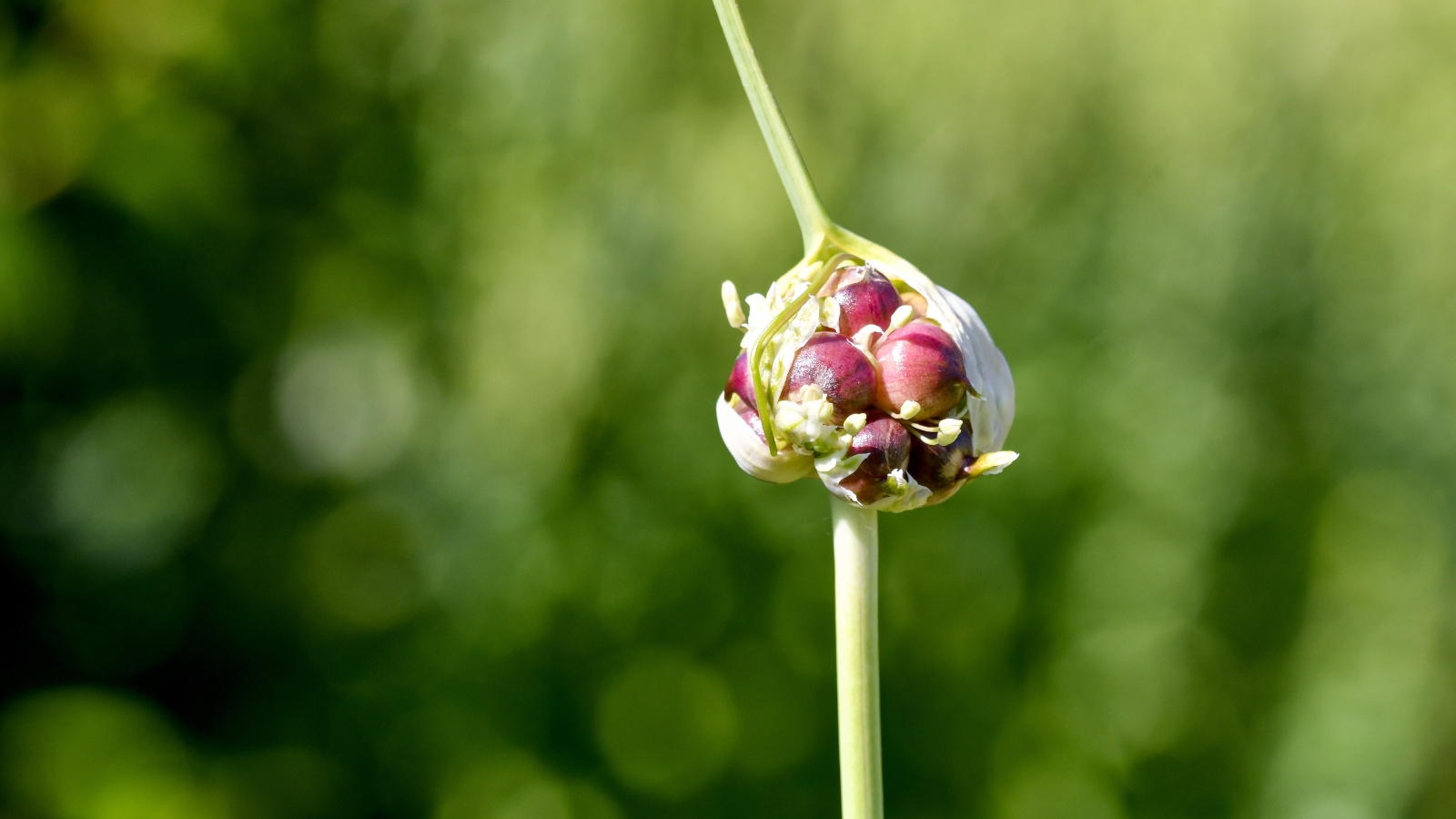
Bulbils are little cloves that develop from scapes that are left to flower. When planted, they take two years to mature into whole bulbs. Only allow garlic to produce bubils if you don’t plan on harvesting it for eating. Once the plant directs all its energy to flowering, cloves aren’t viable, and the central stem is woody throughout.
To multiply your crop, let a few bulbs form scapes and bulbils. Clip them to save for fall planting. Plant the bulbils one and a half inches deep. They’ll enlarge into full cloves their first growing year and into whole bulbs the second.
How to Grow
Garlic is carefree, easy to grow, and doesn’t require a lot of space. With the proper foundation and bed preparation, little else is needed from planting to harvest.
Light
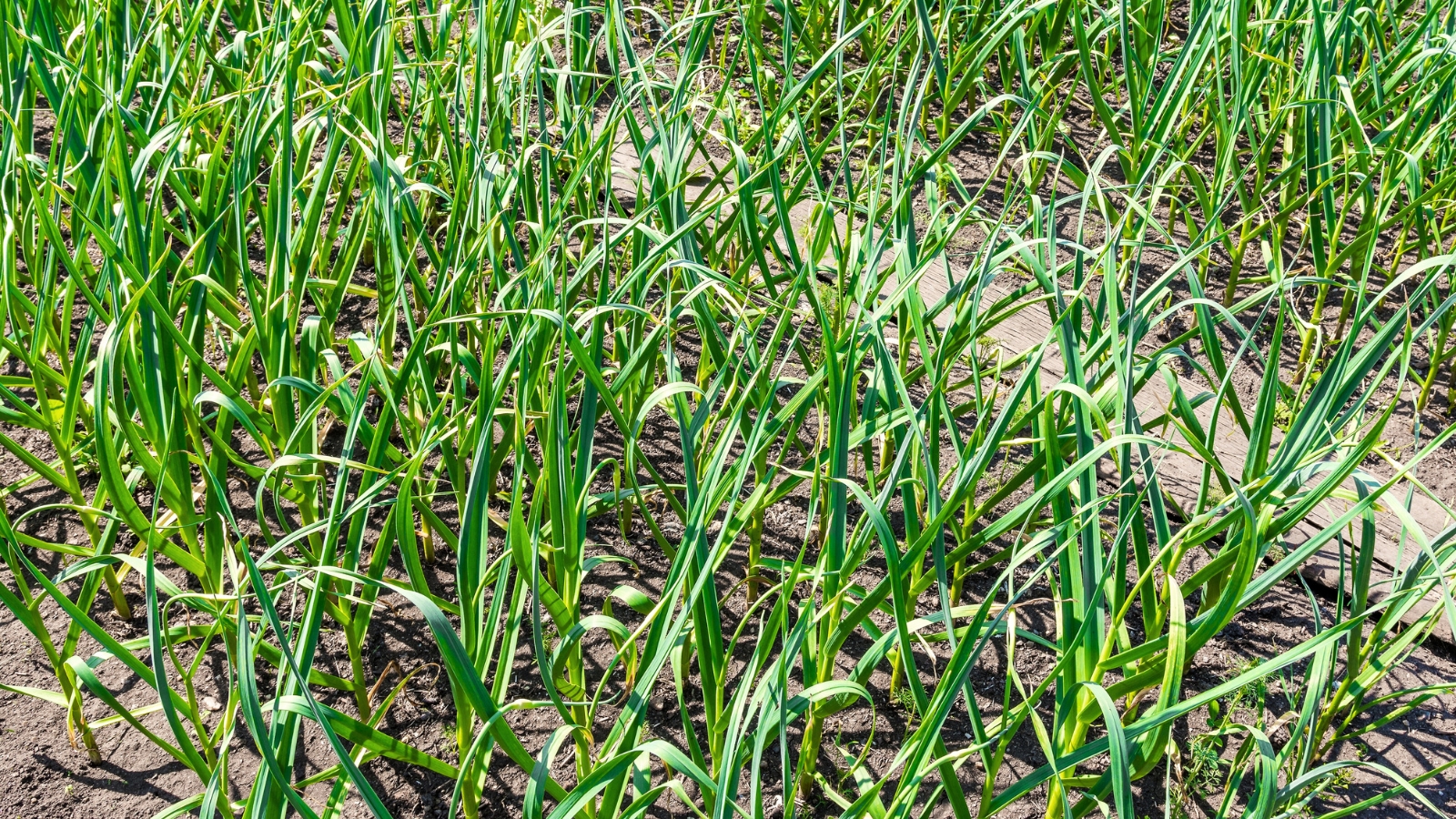
‘Music’ grows best in full sun, with six to eight hours of sunlight daily. They tolerate partial shade, but more sun during the growing season promotes the best vigor and biggest bulbs.
Summer heat and direct afternoon sun in hot climates stress plants. Provide dappled midday light to protect plants from intense afternoon rays.
Water
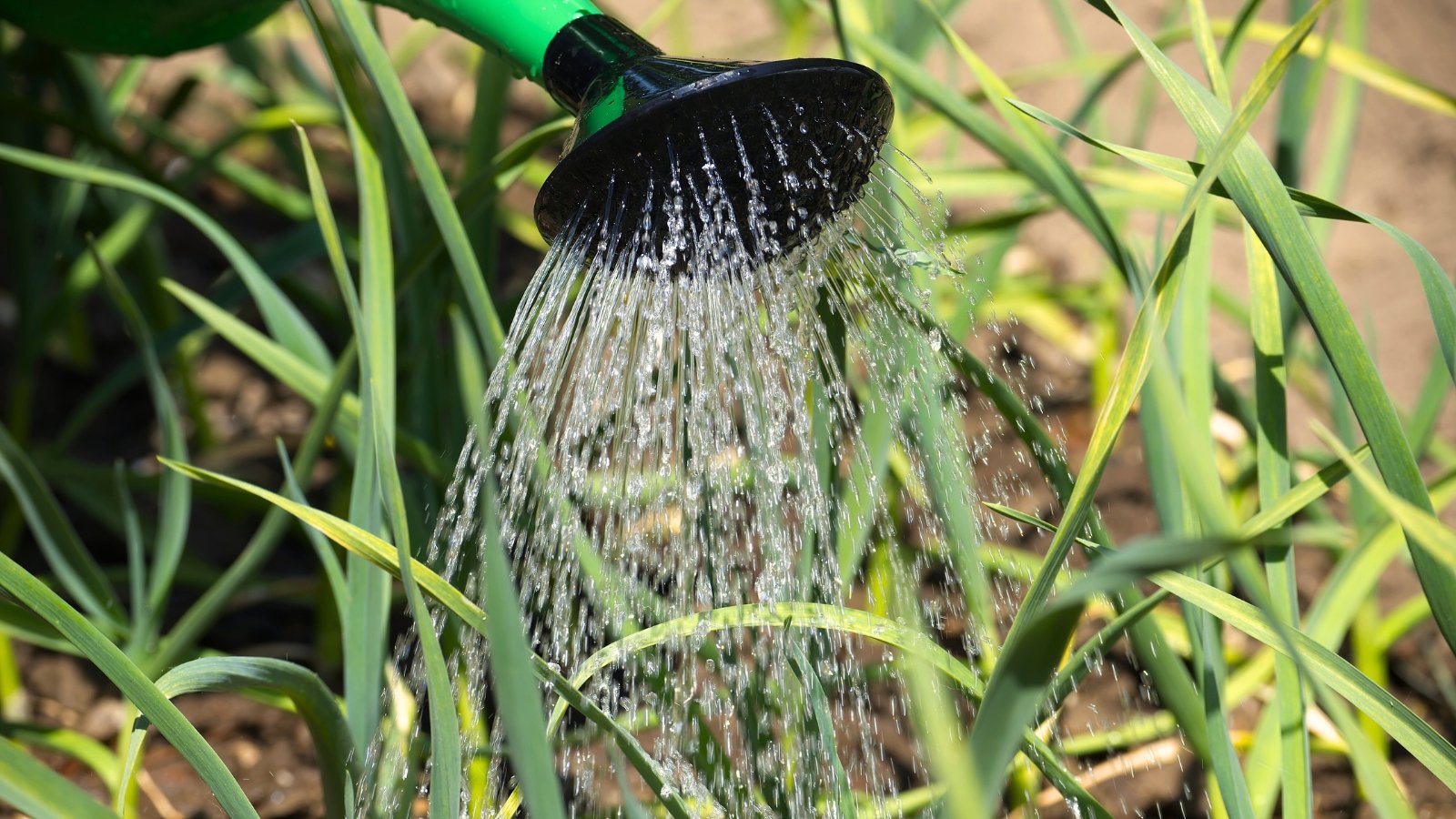
Newly planted cloves and bulbils need regular, even moisture to establish roots in fall. Average seasonal rainfall is usually enough to support them. Supplement with irrigation during dry spells and late-season heat. Aim for evenly moist soils.
Avoid irrigating in winter when bulbs are dormant. Plants aren’t actively growing, and excess water leads to rot. As new growth emerges in spring, revisit regular watering. One inch of rainfall or supplemental water works well.
Reduce watering one to two weeks before harvesting to encourage large bulbs and prevent rot and staining of the papers.
Consistent moisture ensures the plant’s overall health and vigor, but too much water and saturated soils lead to decline and disease issues. Watering deeply, rather than frequently and shallowly, is best for root growth and moisture uptake.
Watering at the plant’s base avoids splashing the leaves and is best for preventing the spread of fungal and bacterial diseases. Drip irrigation, soaker hoses, or direct hand watering are effective. If using spray heads or overhead irrigation, water early in the day so leaves have a chance to dry out.
Soil
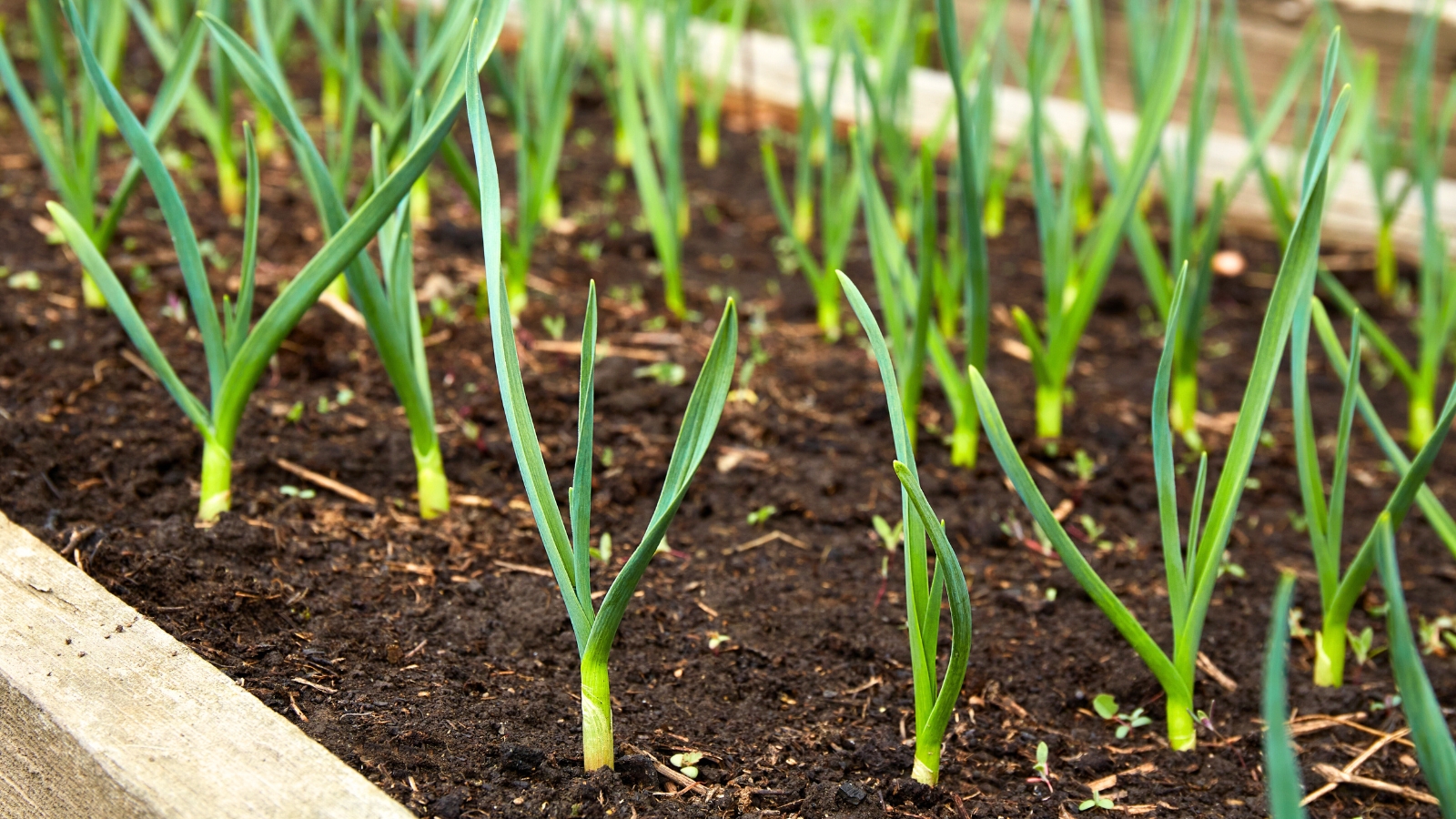
Garlic grows best in organically rich, well-drained soils. They like fertile loams, light and lofty. A pH between 6.0 and 7.0 is optimal.
For poor soils like clay and sand, generously add composted organic material to the native soil. Compost improves aeration, moisture retention, drainage, and nutrition. In compact or poorly drained soils, bulbs may develop disease (wet conditions) or become malformed (drought situations).
Temperature and Humidity
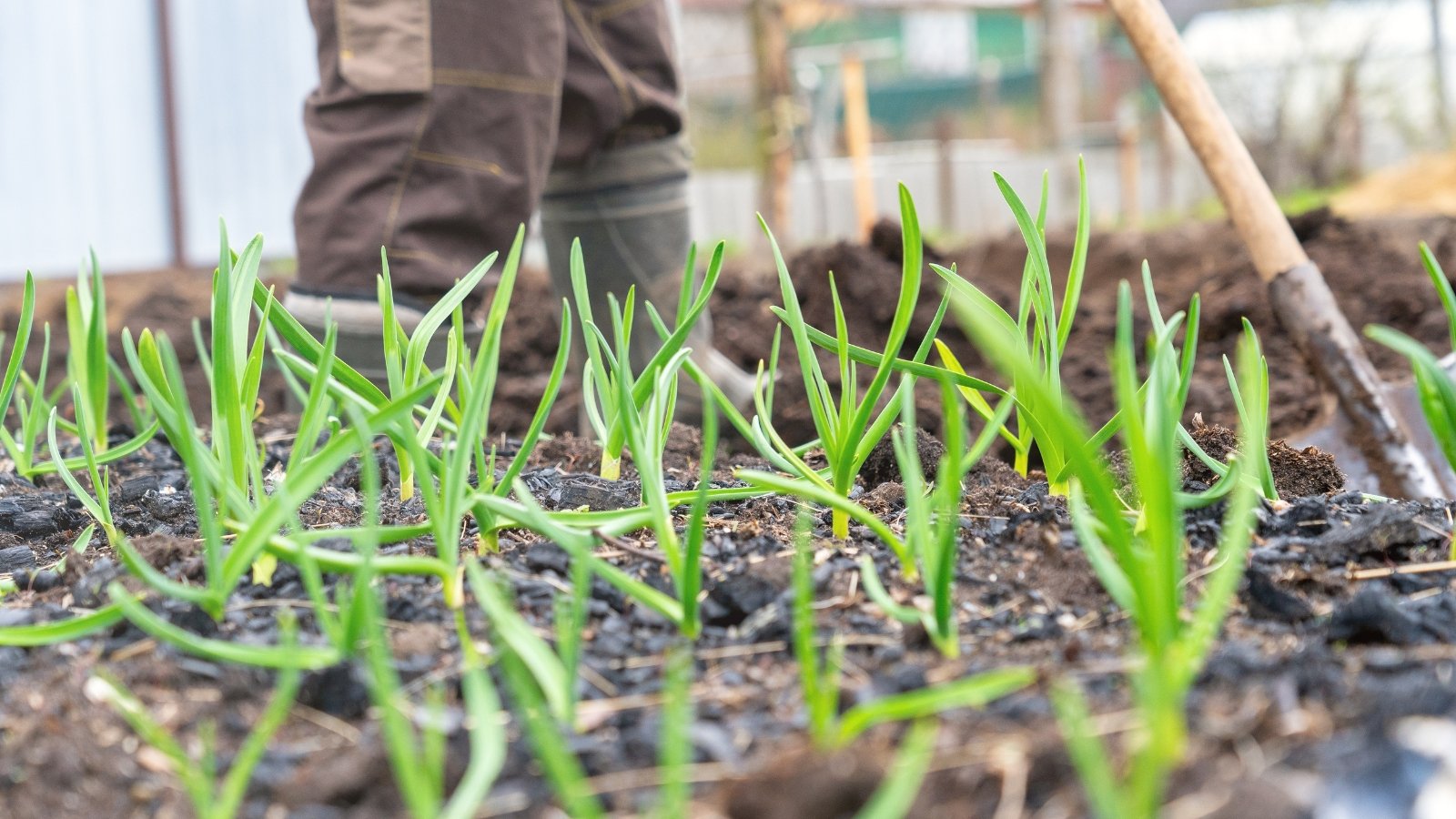
‘Music’ is a cold-hardy selection. It grows well in northern climates and withstands subfreezing temperatures.
The bulbs don’t usually thrive in hot, humid growing areas but adapt to warm conditions if not exposed to early summer heat or drought stress. In southern climates, softneck garlic is more reliable than hardneck. But try adaptable ‘Music’ with a bit of afternoon shade and regular moisture with fertile, well-draining soils.
Plants benefit from good air circulation. Avoid damp situations that lead to fungal issues and weaker plants.
Fertilizing

The bulbous perennials benefit from compost amendments at planting, and nutrient-rich soils don’t require additional fertilizers.
In poor soils, apply a balanced, organic granular fertilizer at the time of planting. When seedlings emerge in spring and reach four to six inches, consider a boost like fish emulsion to spur growth.
Maintenance
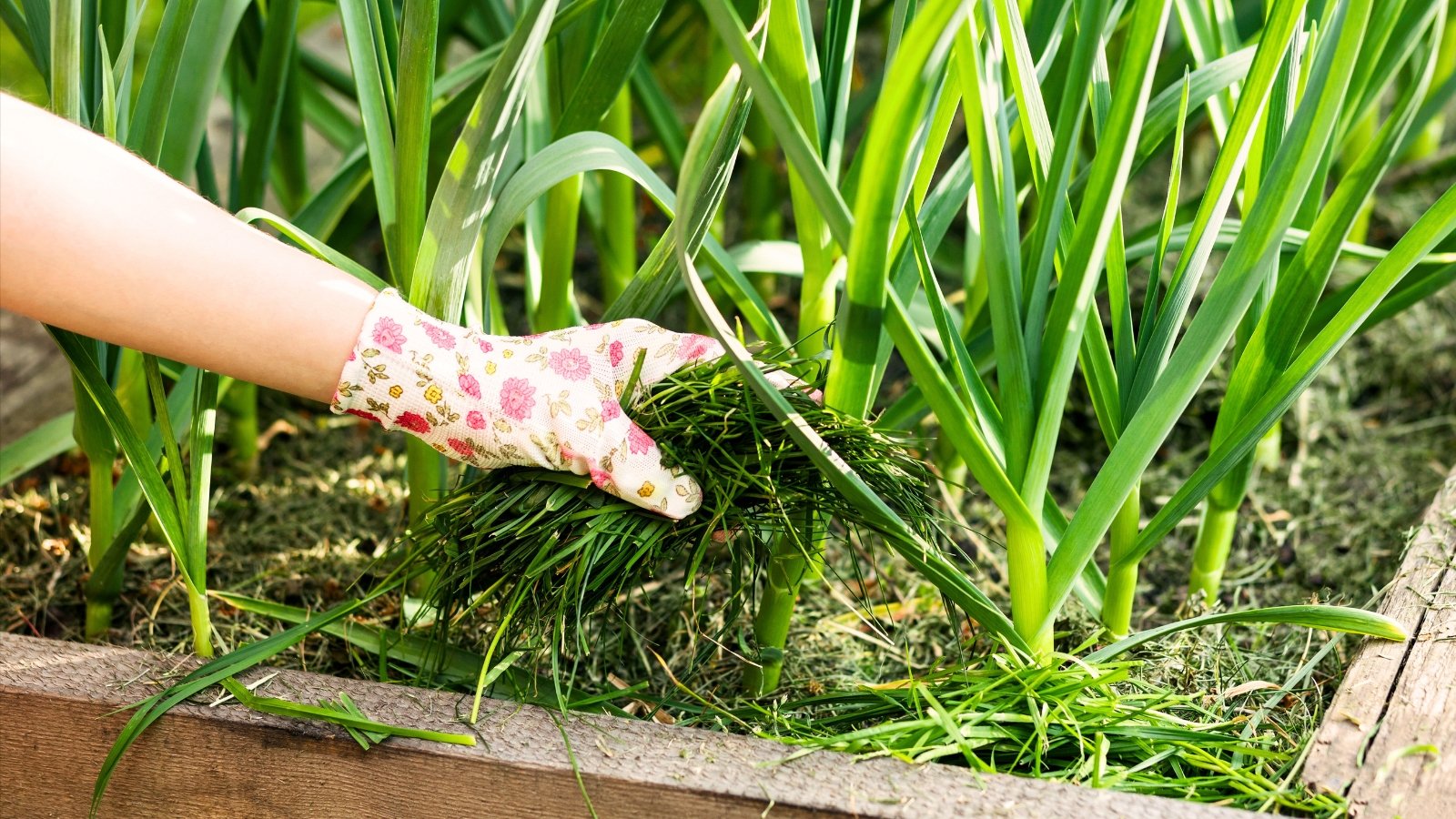
The main maintenance in growing garlic is keeping weeds at bay. Weed regularly to reduce competition for nutrients, water, and sunlight.
At planting, insulate with a layer of straw mulch or leaf clippings. Make sure the straw is weed-free (lacks seeds) to avoid introducing weedy growth.
Clip scapes from hardneck bulbs that you want to harvest. Scape removal ensures energy channels into bulb growth rather than seeding.
Harvesting and Storage
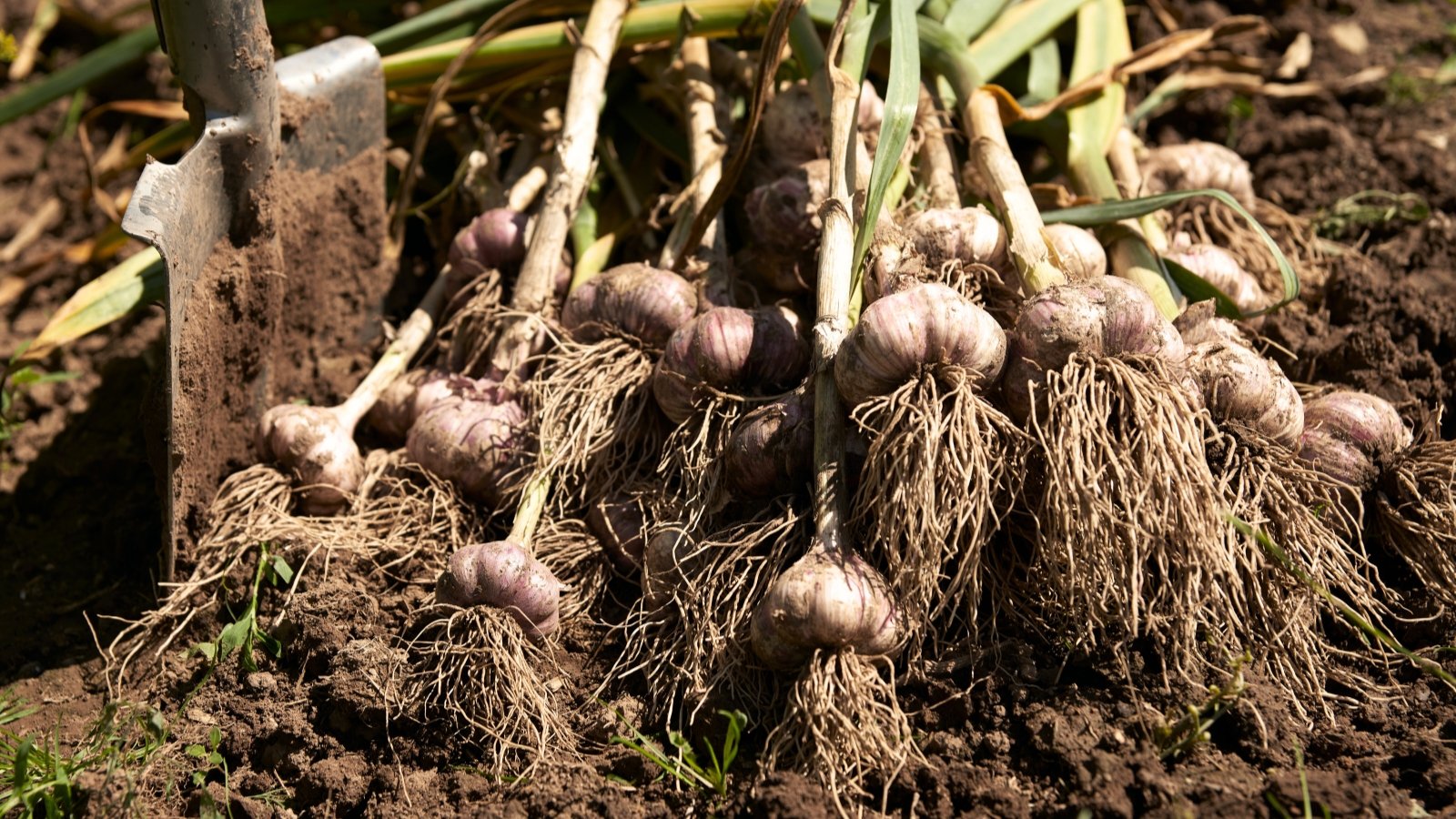
After seven to nine months of patient growth, ‘Music’ garlic is ready to harvest. The primary indicator of readiness is yellowing leaves. A few lower leaves will brown and dry, while upper leaves begin to yellow. Yellowing is at about 40% when ready. Leaves flop over and droop.
To lift bulbs, use a fork to raise them, taking care not to bruise or puncture them. Dig them from the loosened soil. Brush off excess dirt and prepare to cure them. Do not wash them with water, which leads to rot.
Curing garlic involves drying it for preservation and culinary use. Hang bundles of the stems, roots, and bulls in a shaded, dry spot. Allow them to dry for two to three weeks. Drying may take longer in cool or humid environments. Cured and ready bulbs have dry stems and flaky, papery skins.
Once dry, clip the stem one inch above the bulbs and trim the roots. Store ‘Music’ for up to nine months.
Propagation
Division is the easiest way to propagate hardnecks. Divide mature bulbs at harvest to expand the colony. ‘Music’ garlic also propagates through bulbils.
Division
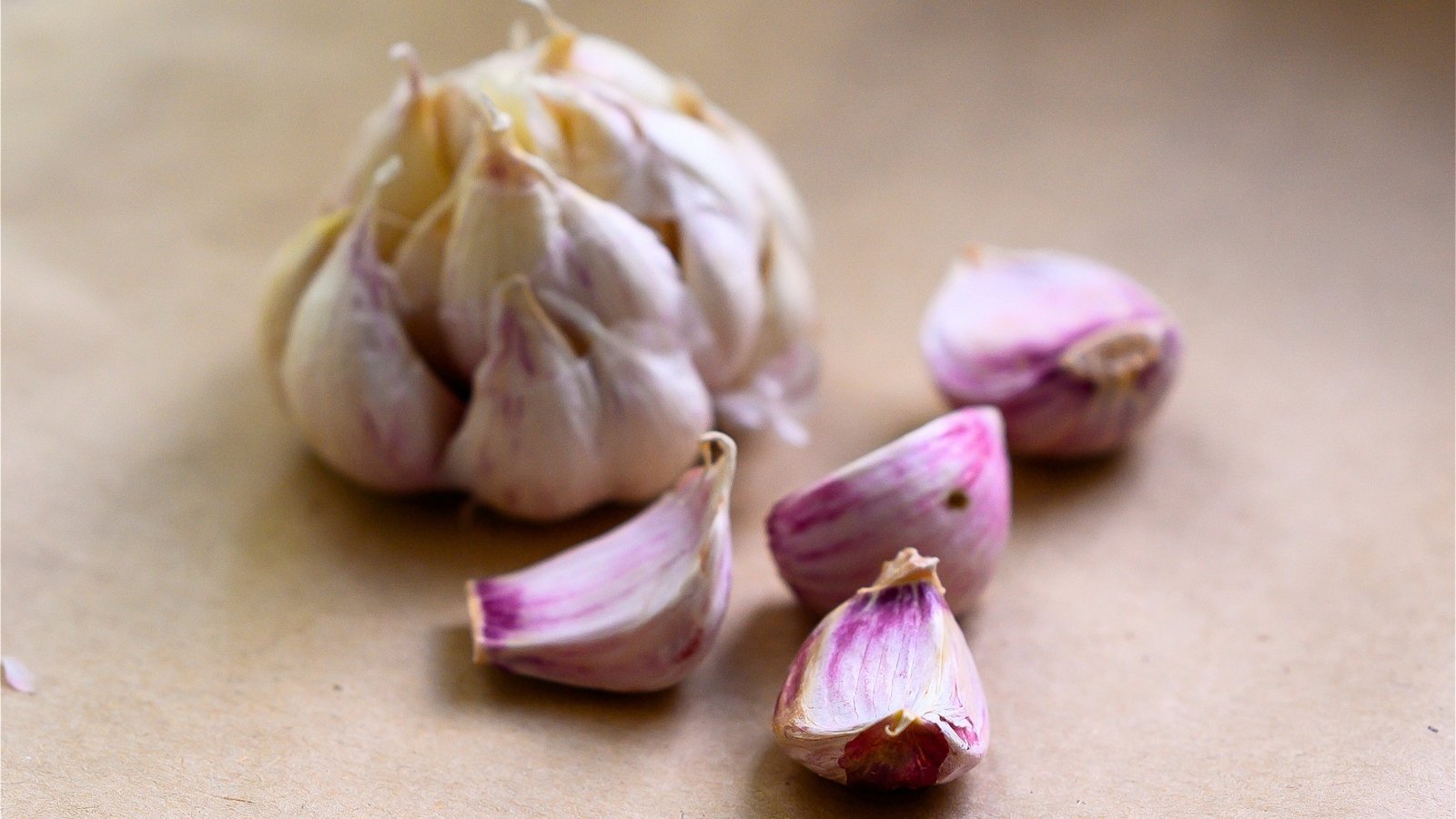
While planting garlic is supremely easy, so is dividing the crop to reserve for the next planting. At harvest, retain the biggest cloves to save for fall planting. In addition to harvesting for eating, saving cloves is an easy way to increase the bounty.
Bulbils
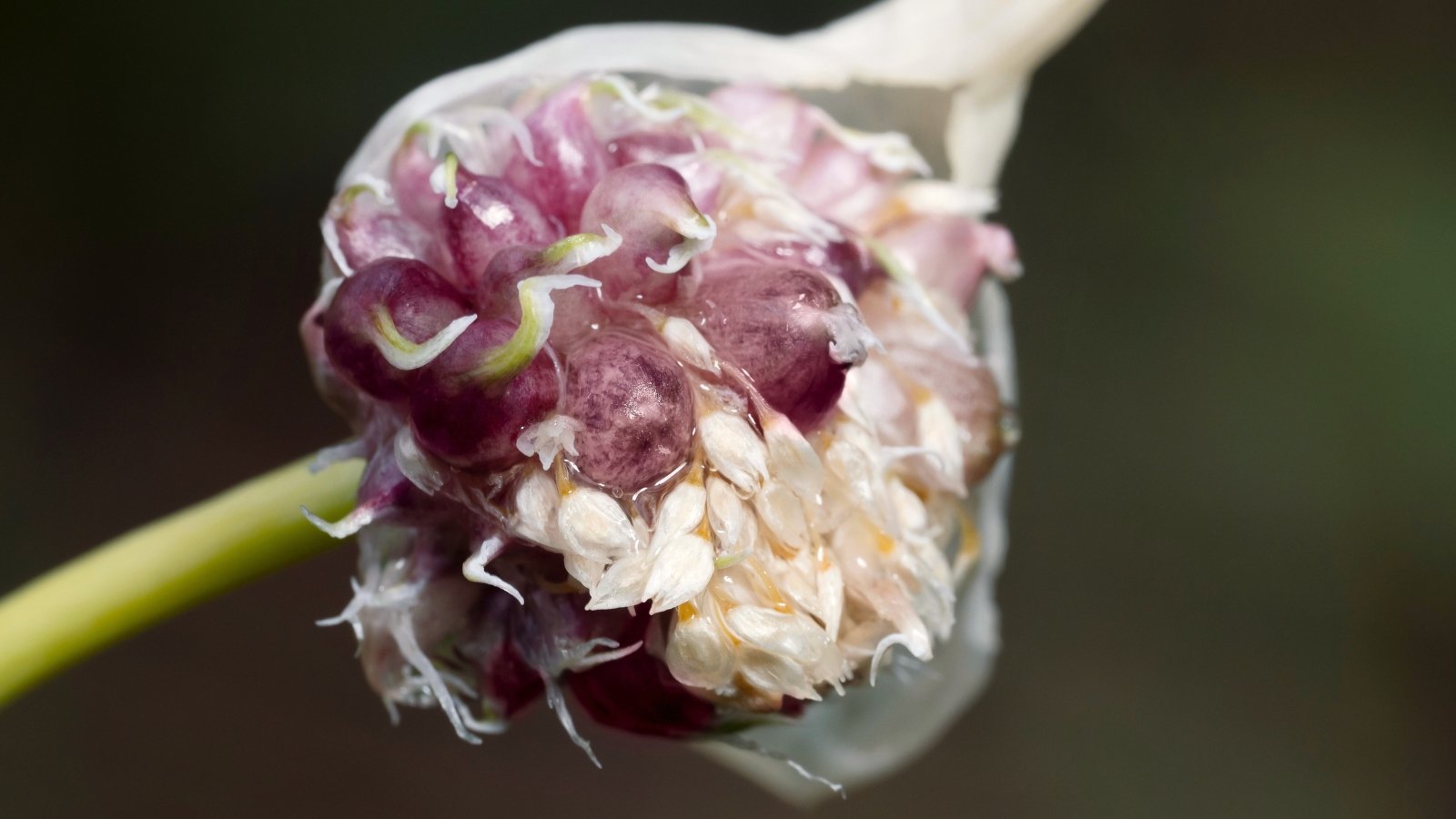
Each scape produces multiple bulbils if you allow a garlic clove to flower. Plant them in the fall in a separate bed where they can develop over two growing seasons. Or, lift them after one year at the single clove stage for replanting. After two years, they’ll be ready-to-eat bulbs.
While bulbils take longer to develop than cloves, they are an easy way to produce a multitude of cloves.
Common Problems
These unfussy growers deter most pests. Thrips may be occasional visitors, and fungal diseases like bulb rot are sometimes a problem. The best prevention is ensuring proper cultural conditions through even watering and healthy soils.
Pests
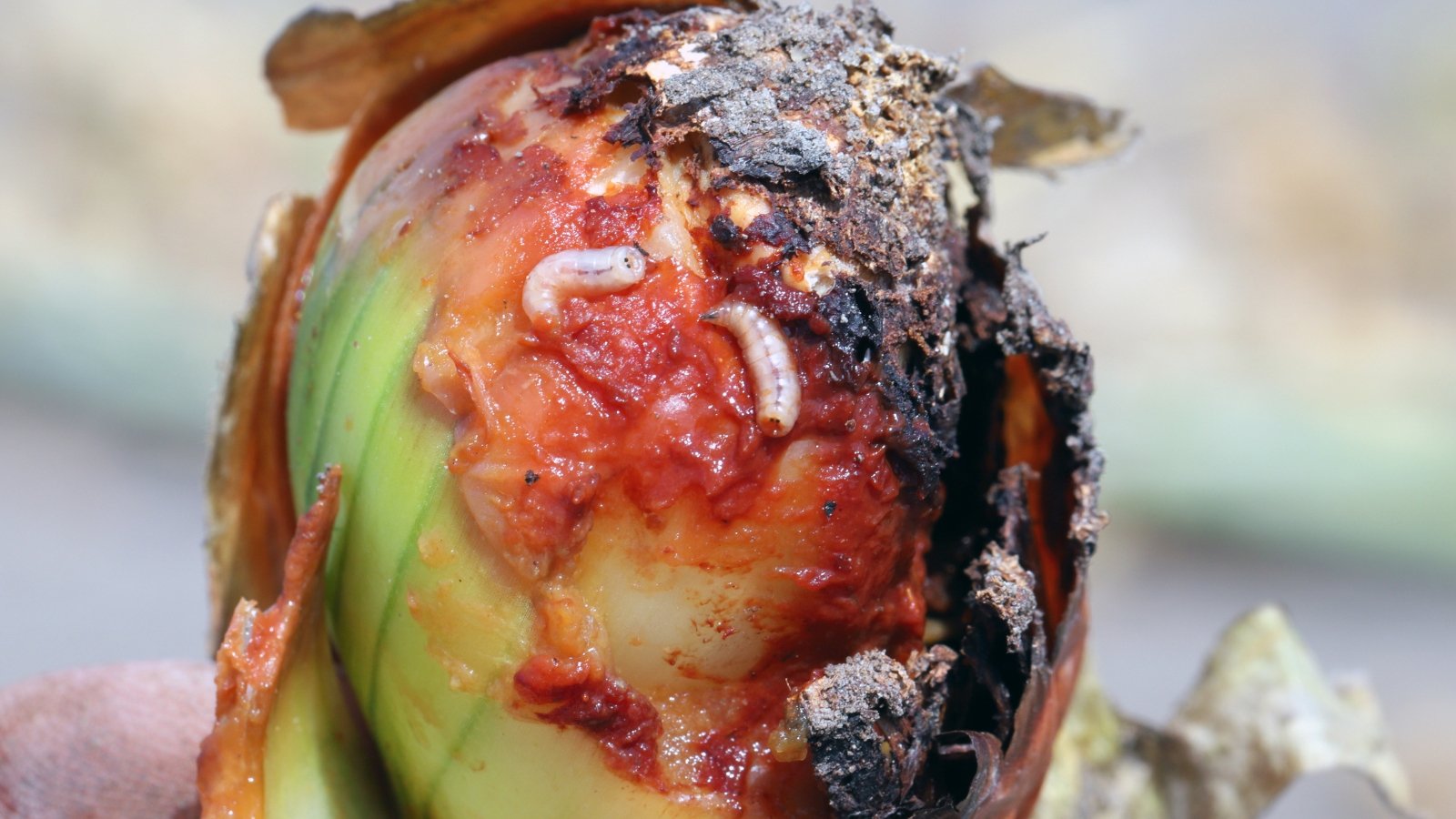
Early detection is the best way to control insects. Thrips are a widespread sap-sucking pest. They’re tiny, slender insects with long, narrow bodies. Adults have fringed wings, and their color ranges from translucent white to yellow, brown, and black.
The insects feed on flower and foliar tissues. Leaves may appear silvery and stippled or brown and papery. Thrips don’t often damage garlic quality, and not all thrips damage plants. Some feed on aphids and mites as natural pest control.
If you see thrips but no indicators of damage on the plant, hold off on treatment. Treatment is in order if damage accompanies the insect, or if you see damage alone. It’s easy to control thrips early on and with regular scouting. A simple horticultural soap or neem oil treats infestations.
Bulb maggots are as unappealing as they sound. They feed on bulbs in the onion genus and bore into stems, causing them to yellow and wilt. If maggots are an issue in your area, avoid planting garlic where you’ve grown alliums in the last few years. Crop rotation prevents infestations.
Diseases
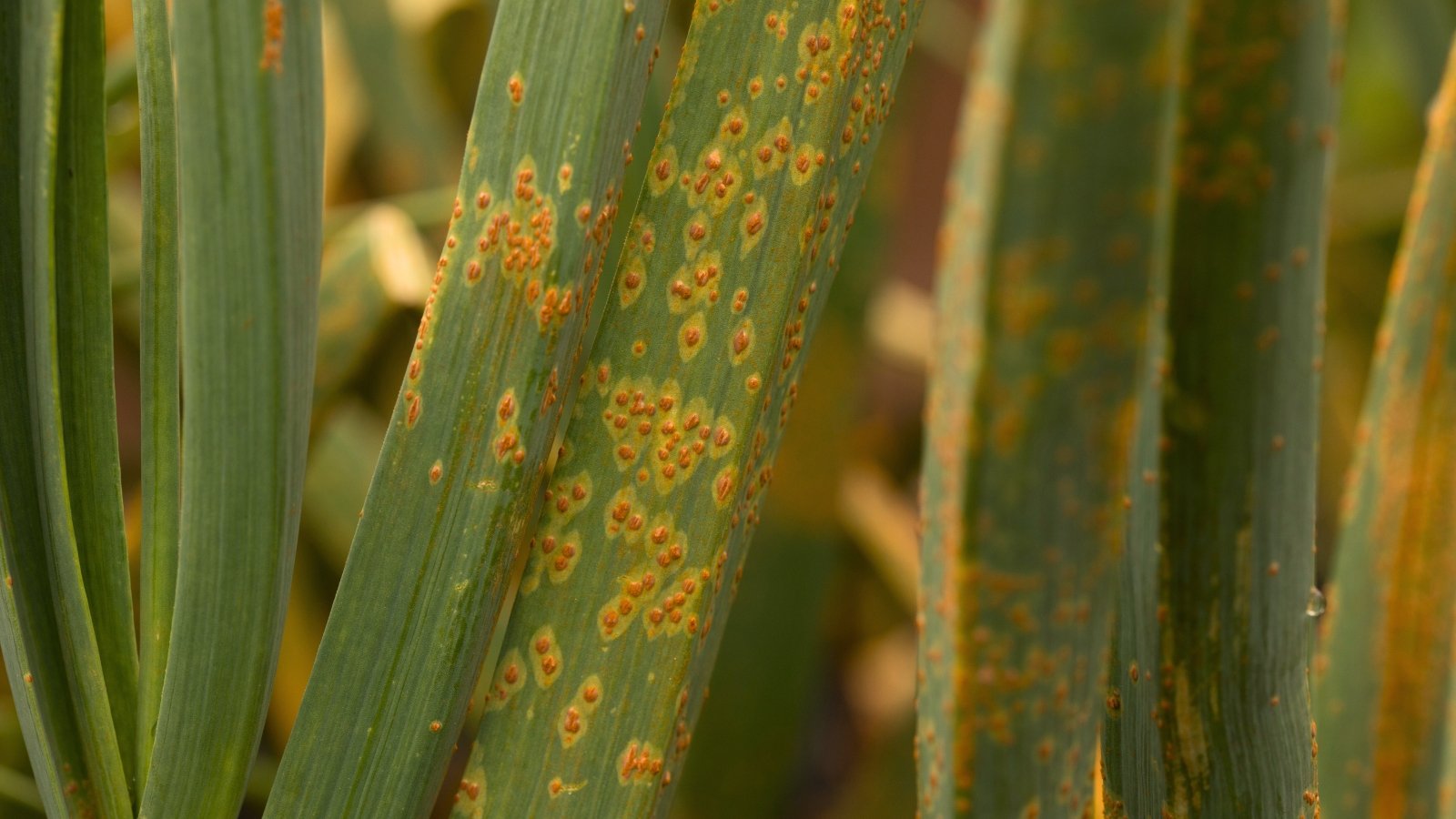
As with pests, the best disease control is prevention through cultural conditions. Common fungal diseases may be an issue with water fluctuations or warm, humid conditions.
Bulb rot occurs in overly wet soils and periods of prolonged saturation. The bacteria cause the bulbs and plant material to become mushy and rot. While there’s no reversing bulb rot once it sets in, improved drainage and cultural conditions can help other bulbs. Remove the impacted bulbs and plants from the bed or planter.
Rust can be an issue on the leaves of your garlic. If you notice rust colored patches on plants, remove them. This is usually enough to control rust. However, set your plants up for success by ensuring there is enough space between plants. Rotate your alliums as a prevention method.
Horticultural oils like neem can treat early fungal infections if removing leaves doesn’t do the trick. These treatments impact beneficial insects, so be sure to follow application requirements.
Frequently Asked Questions
Hardneck garlic is cold-tolerant with large, juicy cloves and a complex, true garlic flavor. Crisp, thin paper layers make the cloves easy to peel. Hardneck develops delicious green fresh scapes. Softneck garlic grows well in warm and cold zones. Cloves are smaller with more papery coverage and a longer shelf life. Flavor varies from mild to hot.
Store-bought garlic has limiting factors of age, quality, and growth-inhibiting treatments. It may grow, but it doesn’t compare to the special selections and flavors of home-grown varieties. We see it sprout in the fridge when it lingers too long, and it will grow after a vernalization (chill) period in the refrigerator.
‘Music’ grows best in cool climates but adapts to warm conditions. Mimic natural vernalization with a chill period in the refrigerator for a month or two. Plant in the coldest months, like January and February, after chilling. After an initial harvest, the cloves will better acclimate to site-specific conditions for future planting.



